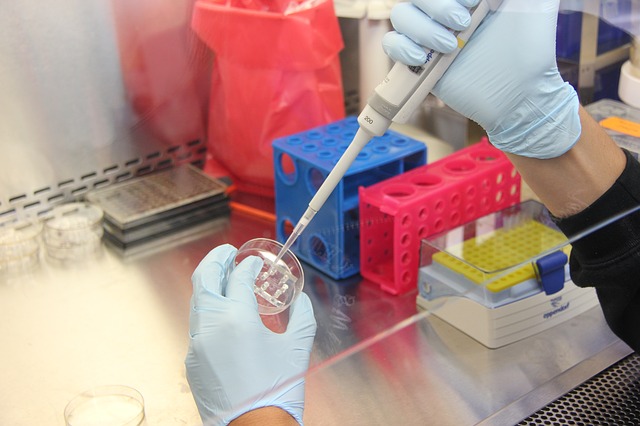February 2003 - Stanford University Medical Center researchers have found that a recently discovered gene regulates HDL (high density lipoproteins) cholesterol, also known as "good" cholesterol. The study, published in the February issue of the Journal of Clinical Investigation, could lead to new therapies for heart disease, said lead author Thomas Quertermous, MD.
"This is a significant and unexpected finding, and the gene is going to be a real target for the prevention and treatment of heart disease," said Quertermous, the William G. Irwin Professor and chief of cardiovascular medicine at Stanford University School of Medicine. "This type of thing doesn't happen every day."
HDL cholesterol, often referred to as the "good" cholesterol, has been proven to impact a person's risk of developing heart disease. "HDL cholesterol is an independent predictor of one's risk," said Quertermous. "If you have a high level of HDL cholesterol your chance of getting heart disease is very low."
Researchers know that levels of HDL cholesterol are regulated in part by members of the lipase gene family. Three years ago, Quertermous' team and a laboratory on the East Coast simultaneously discovered the newest member of that family and found that its protein was expressed in a variety of tissues. Subsequent studies showed that the new gene - the endothelial lipase gene (LIPG) - played a role in lipid metabolism.
"It was a striking, if not dramatic, finding that this gene that we found in the blood vessel walls appeared to regulate HDL cholesterol levels," said Quertermous.
Continue Reading Below ↓↓↓
Quertermous' team sought to examine the gene's exact role in regulating HDL cholesterol level by examining genetic models with altered levels of endothelial lipase (EL) expression. Working with mouse models, the researchers increased EL expression in one group by inserting copies of the human gene and decreased EL expression by knocking out the LIPG gene in another group.
Quertermous reports that the findings were striking: Altering the genes showed a clear and significant inverse relationship between HDL cholesterol level and EL expression. Levels of HDL cholesterol decreased by 19 percent in the first group and increased by 57 percent in the group whose gene was knocked out.
"When we overexpressed the human gene in the mice, the HDL cholesterol levels dropped," said Quertermous. "Conversely, when we knocked out the gene in mice, the levels were much higher."
Quertermous said that his team lacks insight into the mechanism by which EL impacts HDL cholesterol levels, and that this is something his team will explore. The group will also further study mouse models, and a group of human patients, to see if changes in HDL cholesterol levels directly correlate with heart disease. "My hypothesis - and strong suspicion - is that if you knock out the gene, your chance of disease development is decreased," said Quertermous.
Quertermous said a greater understanding of this gene's role in HDL cholesterol's formation and metabolism will help researchers regulate this risk factor. "This becomes one of the most attractive targets available for the development of pharmaceutical agents to modulate HDL cholesterol levels," he said.
The research was done at the Donald W. Reynolds Cardiovascular Clinical Research Center at Stanford, which was established with a grant from the Donald W. Reynolds Foundation. Quertermous' collaborators on the study include Allen Cooper, MD, professor of medicine at Stanford, and researchers at the Palo Alto Medical Foundation.
Stanford University Medical Center integrates research, medical education and patient care at its three institutions - Stanford University School of Medicine, Stanford Hospital & Clinics and Lucile Packard Children's Hospital at Stanford.
Source: Stanford University Medical Center











